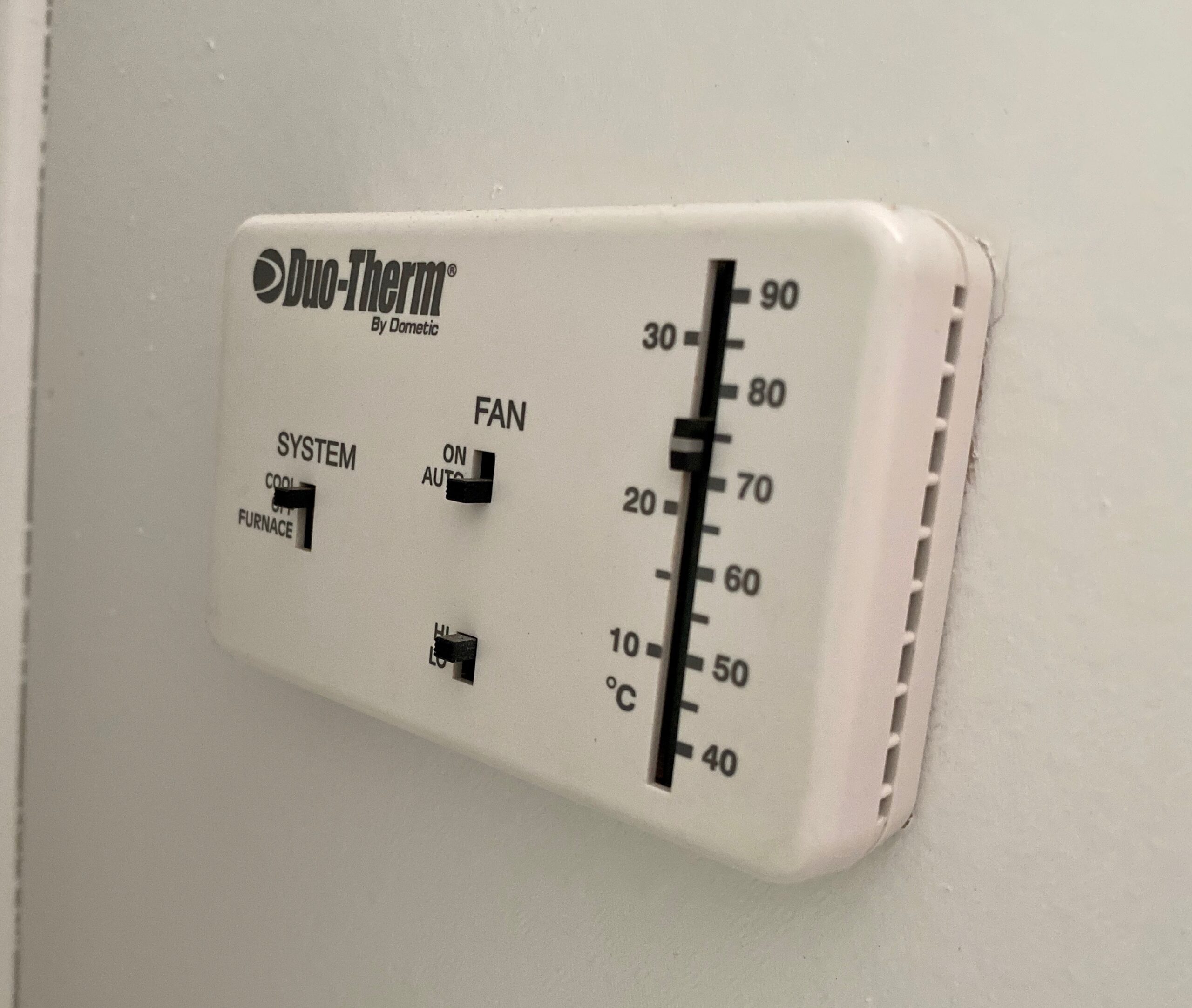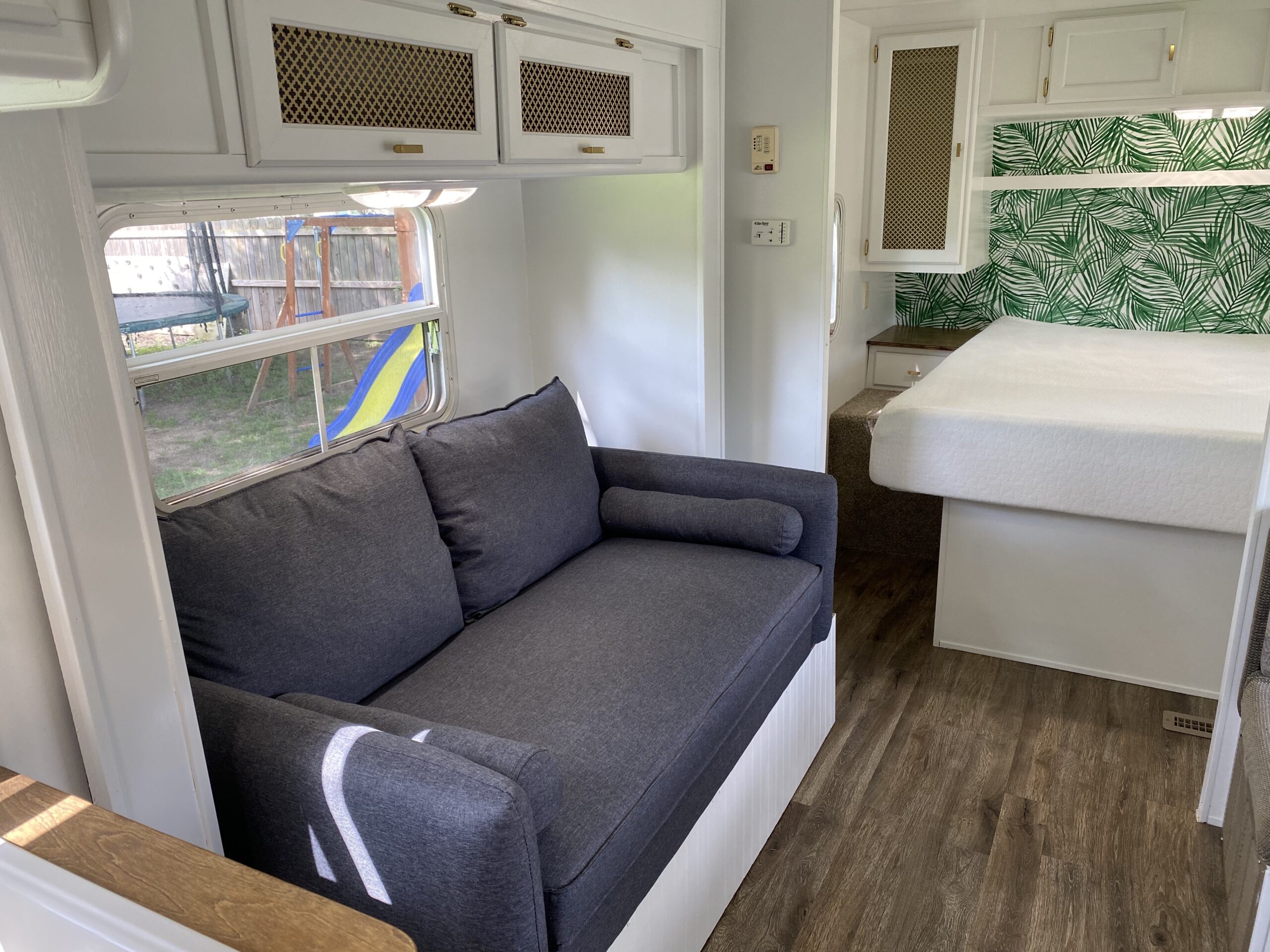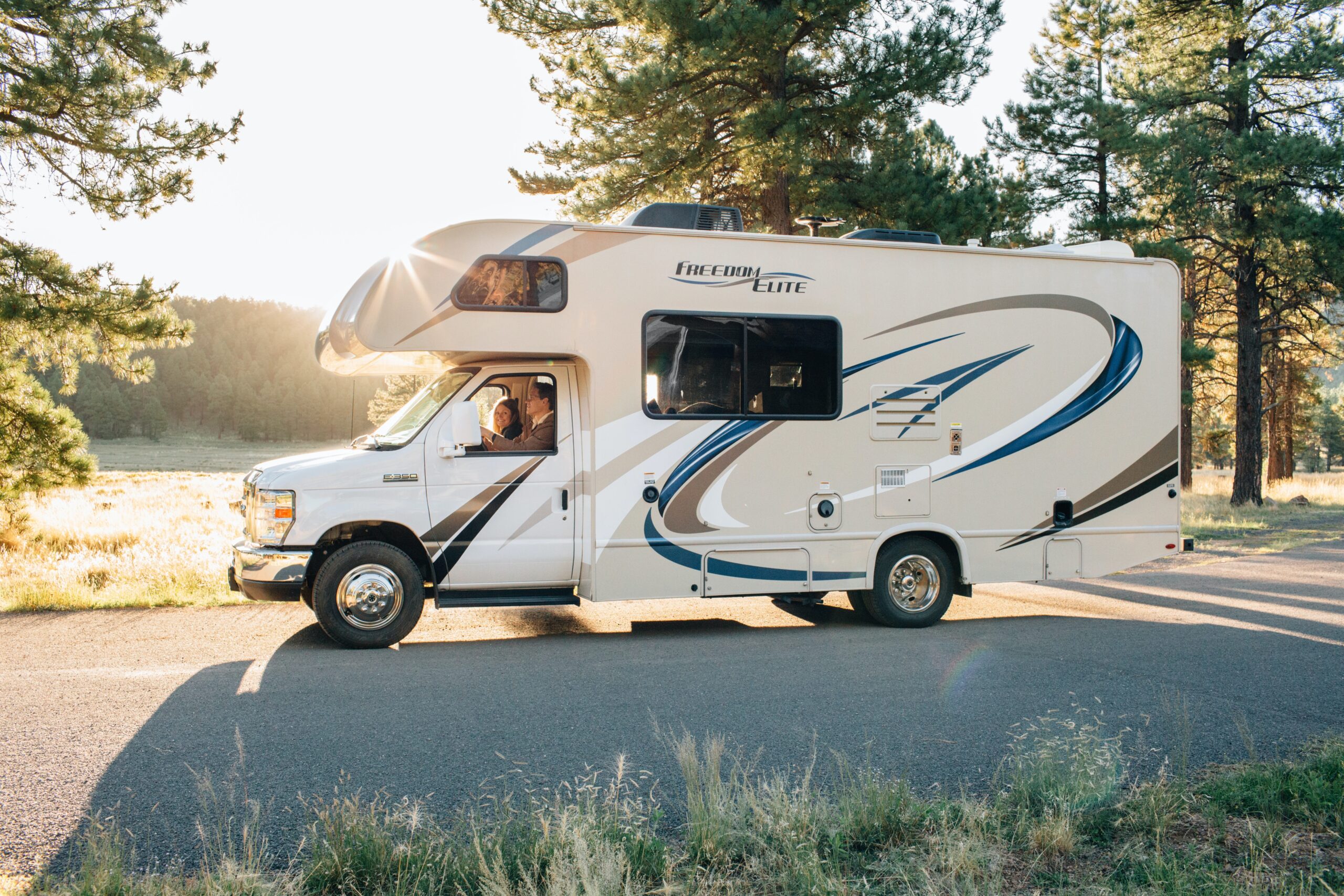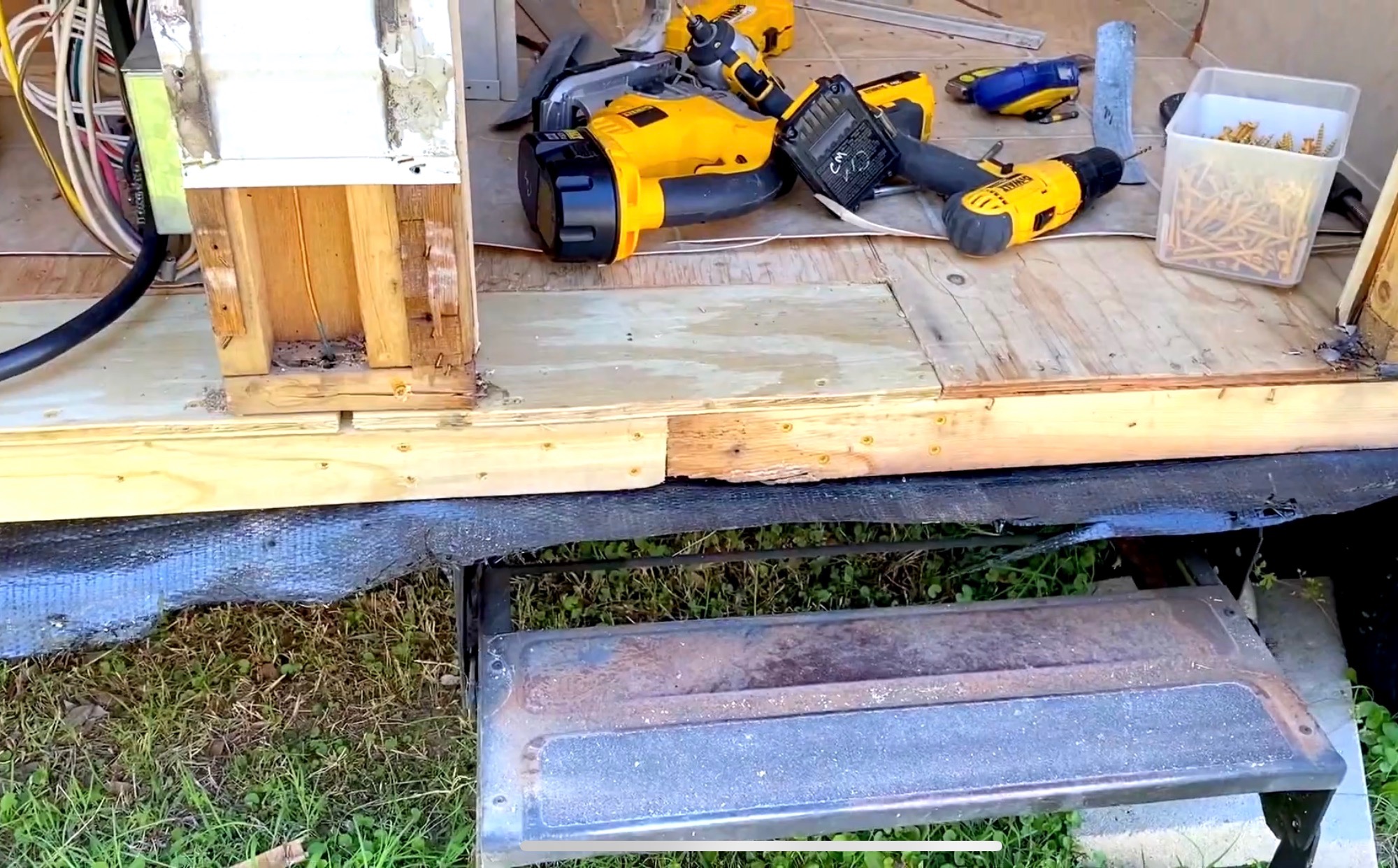A thermostat is one of the most essential parts of an RV’s setup as it keeps you warm in the winter months and ensures your rolling home stays cool when it gets hot outside.
But what happens when your thermostat doesn’t do what thermostats are meant to do? Do you need to spend lots of money to have it replaced professionally, or can you just use a good old house thermostat?
You can replace your RV thermostat with a house thermostat, but there are some factors that will determine whether it is efficient, including the make and model of your RV, the type of heating and cooling system your RV has, and whether the replacement thermostat is battery operated or not.
The rest of this article will discuss several topics related to this question, including when and why you might need to replace your RV’s thermostat, the factors relating to what you can use to replace said thermostat, and how to do so should you wish to. Now let’s dive right in!
How Do You Know if You Should Replace Your Thermostat?
There are several factors that have an influence on how long your RV’s thermostat will function properly, but there may also be other reasons why you need to replace it. Here’s a rundown of a few of those reasons.
Your Thermostat Needs to Be Reset
Before you go spending a lot of money trying to figure out whether to replace your RV thermostat and buying a replacement, it might be a good idea just to reset your thermostat.
Think of it like rebooting your computer or returning your phone to its original settings. The way you reset your thermostat will depend on the make and model you have, so it is best to check your user manual for the specific instructions on how to do this.
If you have lost or thrown out these papers, you should be able to find the instructions for your unit online; either on the manufacturer’s website or on one of the plethora of internet forums.
You’re Living Analog in a Digital Age
Most things in our lives are programmable these days, and there’s no reason why your RV thermostat shouldn’t be too.
Most RV’s come installed with an analog thermostat, which is usually non-programmable, minimally adjustable, not very accurate, and most of the time, quite cheap too (they can sometimes be off by 10℉/5.5℃).
A programmable digital thermostat offers a lot of comfort and convenience that it seems like a no-brainer to switch to one as soon as possible.

However, you need to make sure that the digital thermostat you want to use is compatible with your RV model. This will be easier if you buy from a dealer or retailer with knowledgeable salespeople. You could also contact your retailer directly by email or telephone.
Your Thermostat Has Gone Bad
Although thermostats are usually built to last a long time, sometimes they do break or become faulty. There are a few ways you can check if this is indeed the case.
Replace the Thermostat’s Batteries
Sometimes life is as simple as changing the batteries on an electrical appliance. This may be the solution if your RV’s thermostat is battery-operated, as having flat batteries can cause your thermostat to malfunction and possibly break.
However, fixing this is very easy. All you’ll need is some new batteries (AA or AAA depending on your thermostat model) and your hands. You should be able to just pop the front cover off of your thermostat and replace the old batteries with new ones.
The Thermostat’s Display Is Blank
The easiest way to tell if your RV’s thermostat isn’t working is if the display screen is blank. If your RV is equipped with a digital thermostat and the screen isn’t showing any information, then your thermostat is likely broken and will need to be replaced. Analog thermostats don’t have a display, so you’ll need to do a manual temperature check to see if it’s working or not.
Temperature and Thermostat Setting Don’t Match
One of the first things you could notice that’ll indicate to you that something’s up with your RV’s thermostat is if the thermostat setting isn’t corresponding with the temperature you’re feeling inside your RV.
Say, for instance, you’ve got your thermostat set to a cool 70℉ (21℃), but you are still sweating inside, it may mean that the thermometer isn’t transmitting the signal to your HVAC system (which is an abbreviation for your heating, ventilation and air conditioning system) properly.

To see if this is the case, you can start by finding out if the temperature that appears on your RV’s thermostat is the same as the temperature of the room. You’ll need to use a different thermometer to measure the room’s temperature, like this Habor Hygrometer Indoor Thermometer.
If you find that the temperature indicated on the two thermometers differs, it means that your thermostat is probably broken and will need to be replaced.
Just think, if your RV’s thermostat thermometer is measuring that the temperature is already 70℉ or 21°C (even if it isn’t), it won’t switch the air conditioner on to cool your RV down.
The same goes for if your RV isn’t heating up enough in the colder months.
The Heating or Air Conditioning Is Not Responding
If your heat or air conditioning systems won’t switch on or shut off, this could be an indicator that your thermostat is broken.
To test if this is a problem, increase or reduce the temperature by 10℉ (~5℃) beyond what the current temperature setting is. If you don’t hear a distinct ‘click’ sound when you do this, then your thermostat is likely broken.
The ‘clicking’ noise is an indication that your thermostat is transmitting a signal to the heating or air conditioning system to switch on or off.
You will hear a ‘click’ sound when the temperature in your room comes to what you have set your thermostat to, and if this is not happening, you’ll need to replace your RV’s thermostat.
Will Typical Thermostats Work in RVs?

You absolutely can use a household thermostat to replace a broken RV thermostat and make it work. All you need to do is make sure that it is a battery-operated thermostat.
The reason for this is that household thermostats usually run on 24 volts of alternating current (AC) power, whereas RV thermostats run on 12 volts of direct current (DC) power.
For this reason, if the household thermostat is not battery operated, it won’t work properly, as an RV isn’t able to supply the power that a household thermostat needs.
If it is battery operated (make sure it’s not just battery backup), the thermostat uses the internal battery to power the relay and its display instead of relying on an external power source.
Another factor that will determine whether or not you can use a household thermostat as a replacement is the type of RV you own. Certain types of RV thermostats have to be replaced with the same model as the old one because their wiring is done in such a way that it would be nay impossible to connect a different model.
If your RV has a dual speed air conditioning system, you’ll need to get a thermostat that has dual fan speed capability, or you’ll have to add an extra switch to control the air conditioner’s different fan speeds.
The difficulty of installing a household thermostat into your RV will depend very much on your RV’s heating and air conditioning setup. You may also need to spend some time figuring out how to connect the wiring, but you’ll save yourself some money in the process by doing it yourself.
Can You Fix a Thermostat Yourself?
As luck would have it, you can replace or fix your RV’s thermostat yourself as long as you follow the necessary safety precautions and are somewhat comfortable with electricity. You’ll need a few tools and some basic know-how, but fixing and replacing your thermostat are relatively easy to do.
Here’s a list of the tools you’ll need:
- Gloves
- Multimeter
- Set of Screwdrivers
For most of the troubleshooting, you’ll need to have the thermostat’s front cover off, which should easily pop off with a little pull to reveal the wires, batteries (where relevant), and screws.
Check the Batteries or Fuse
The reason your thermostat isn’t working may be just a simple and basic power issue. There are two possible culprits for this issue; batteries or a fuse.
As mentioned before, replacing your thermostat’s batteries is the easiest way to fix any issues you’re having with your thermostat. If your RV’s thermostat is battery powered and the batteries are flat, obviously it won’t work.
However, if your thermostat isn’t a battery-powered one, there could be another culprit: the fuse. This kind of thermostat will be plugged into the RV’s electrical system, meaning that if you’re having a power problem, you’ll have to inspect the fuses.
Use your owner’s manual to find where your thermostat’s fuse is located (it’s sometimes labeled ‘furnace’) and remove it to check if it’s broken.
If it is damaged or broken, you’ll have to replace it. Be sure to get the same size fuse. If you get a fuse with a higher or lower number of amps (amperes), this will cause problems, too, so be very careful to make sure you get the right one.
After changing the fuse, you can check the thermostat’s display screen to see if it’s functioning again. If it isn’t, it might mean that there’s a problem with the wiring.
Test Your RV Thermostat’s Wiring

This step will only be relevant if your RV’s thermostat isn’t battery powered. If it is battery powered and switching out the batteries didn’t fix the problem, you’ll likely have to replace that thermostat.
You’ll need some help to test your thermostat’s wiring because someone will need to switch the thermostat on while you’re testing. You should be able to easily remove your thermostat from the mounting bracket that it is on, and once you’ve done that, you will be able to test whether your thermostat is getting energy.
You’ll need to use a multimeter to do this. Make sure it is calibrated to read DC voltage before you begin. Put the red prod on the positive terminal and the black prod on the negative terminal to test how much power your thermostat is getting (it should be getting 12V).
If you did get a reading, but your thermostat still doesn’t work, it means you’ll have to replace it.
How to Replace Your RV Thermostat
If none of the troubleshooting methods fixed your thermostat, you’d need to replace it. Fortunately, this is not as difficult as it seems and may save you some money too. Replacement thermostats can range between $20-$200, depending on how advanced its features are.
The way your thermostat will need to be replaced will differ depending on what RV you have, but this is a general guide of how this could be done.
- Switch off the power supply to your thermostat/HVAC system by disconnecting the RV’s battery and/or unplugging your shore power/generator.
- Wear gloves to ensure you are safe to work with the wires.
- Remove the old thermostat by taking the front cover off and unscrewing it from its mounting.
- Pay attention to how the wires are attached to the old thermostat for future reference before you remove them. You can also take a picture to be extra sure.
- Disconnect the wires from the rear of your old thermostat.
- Now you can unscrew and remove the mounting bracket from the wall.
- Remove your replacement thermostat from it’s a packaging and give the user manual a quick skim to check if there are any specific instructions on how to install it.
- Screw the replacement mounting bracket into place where the previous one was.
- Now you can hook the wires up to your new thermostat. Check the notes you made of how they should be connected.
- Once the wires are connected, screw your thermostat to the mounting to secure it and put the front cover back on.
- Reconnect your system to its power source to test out if your installation worked. If it doesn’t, make sure you didn’t forget to replace a fuse or install the thermostat’s battery. Or you can recheck to see if you connected the thermostat’s wires correctly.
Now that you’ve replaced your RV’s thermostat and are up and running again, you’re good to adventure all year round. Be sure to remember to make sure you get the right thermostat for your model of RV, as not all RVs and thermostats are compatible.
It’s also good to note that not all thermostats are created equal, so be sure to check whether yours can even be replaced with a generic one or whether you need to get the exact same model again.
The type of thermostat you get will also depend on how much you’re willing to spend, what your desires are, and your RV’s needs. Nowadays, it is better to go with a digital and/or programmable thermostat, as they will give you more control and reliability as opposed to an analog thermostat.
However, if this isn’t at all possible, there are some good analog thermostats on the market too.
A good quality, newly installed thermostat should last for quite a long time. Some will even last for longer than ten years.
Ask a knowledgeable person to help you pick out the right (and best) thermostat according to your model of RV and the functions you need from your thermostat (these will include things like the types of conditions you’re going to be traveling in most often; for example, a colder climate versus a warmer climate).
Additionally, replacing your thermostat is definitely not the only way to fix your RV’s heating and air conditioning systems, so if replacing it didn’t solve your issues, it’s best to call in the professionals for some help.
Conclusion
From a technical standpoint, you’re able to use a house thermostat to replace an RV thermostat if:
- The replacement thermostat is battery operated.
- The make and model of your RV is compatible with the replacement thermostat.
Many people have succeeded in using a household thermostat in their RVs, and sometimes they can work even better than an RV thermostat.
However, if the household thermostat is connected to your RV incorrectly, it won’t work and may cause even more damage in the process. Thus, it may still be better to use a designated RV thermostat to replace the one you currently have in your RV. They’re made for that specific purpose for a reason, right?
No matter what kind of thermostat you choose to use in your RV, if you aren’t completely comfortable replacing it yourself, it’s always better to hire a professional (or ask a handyman friend) to do it for you.






